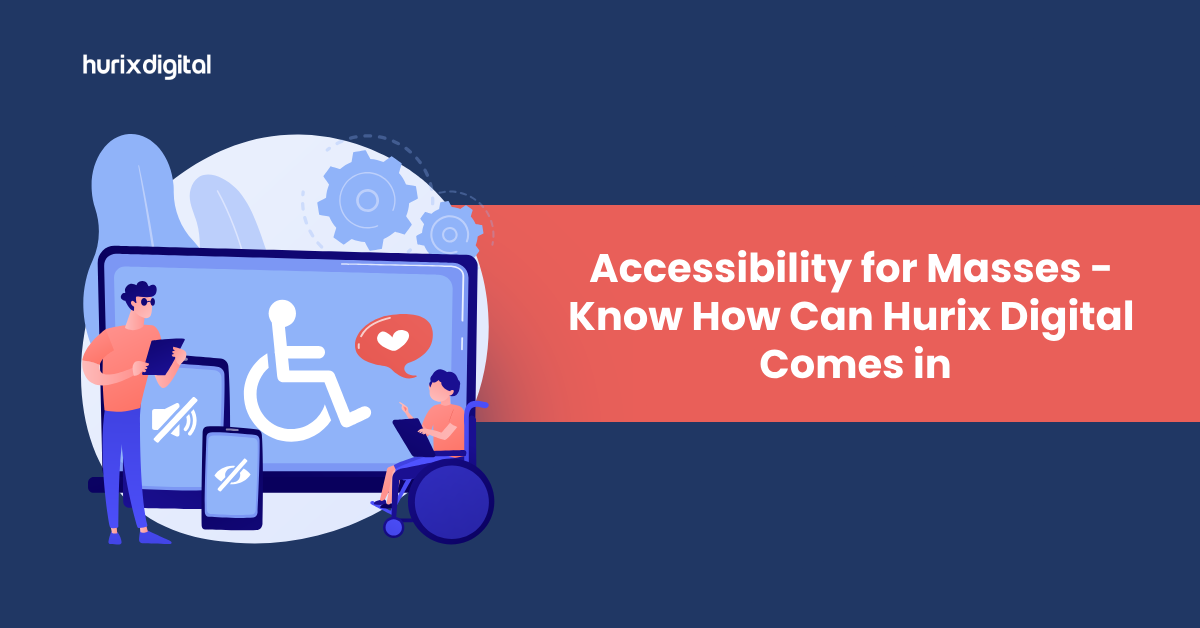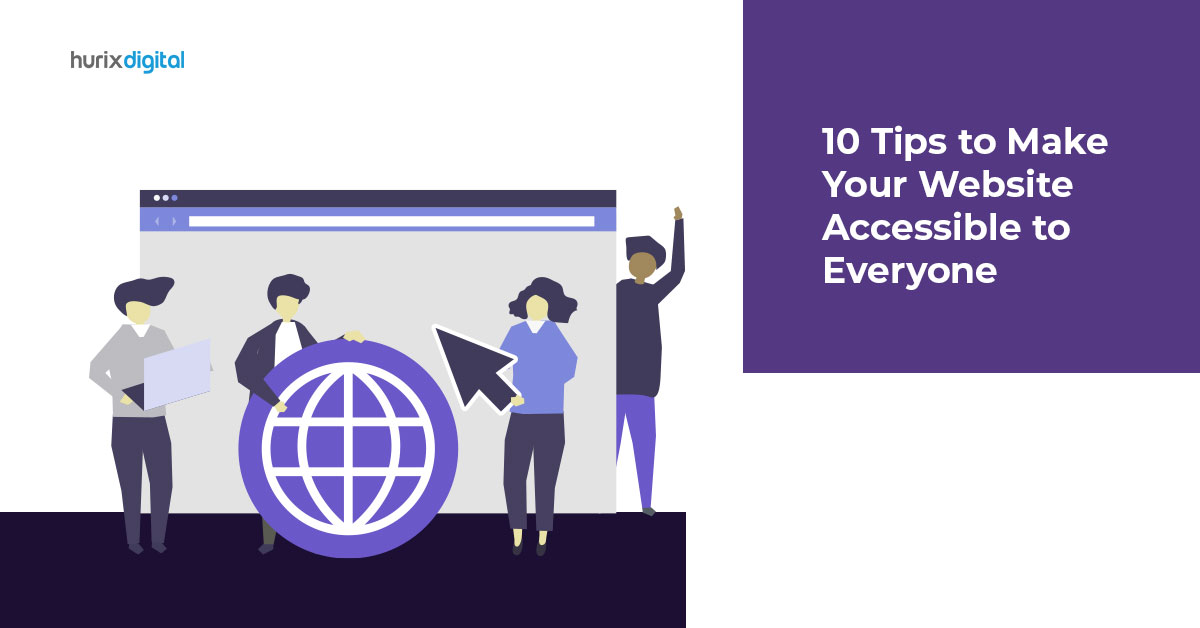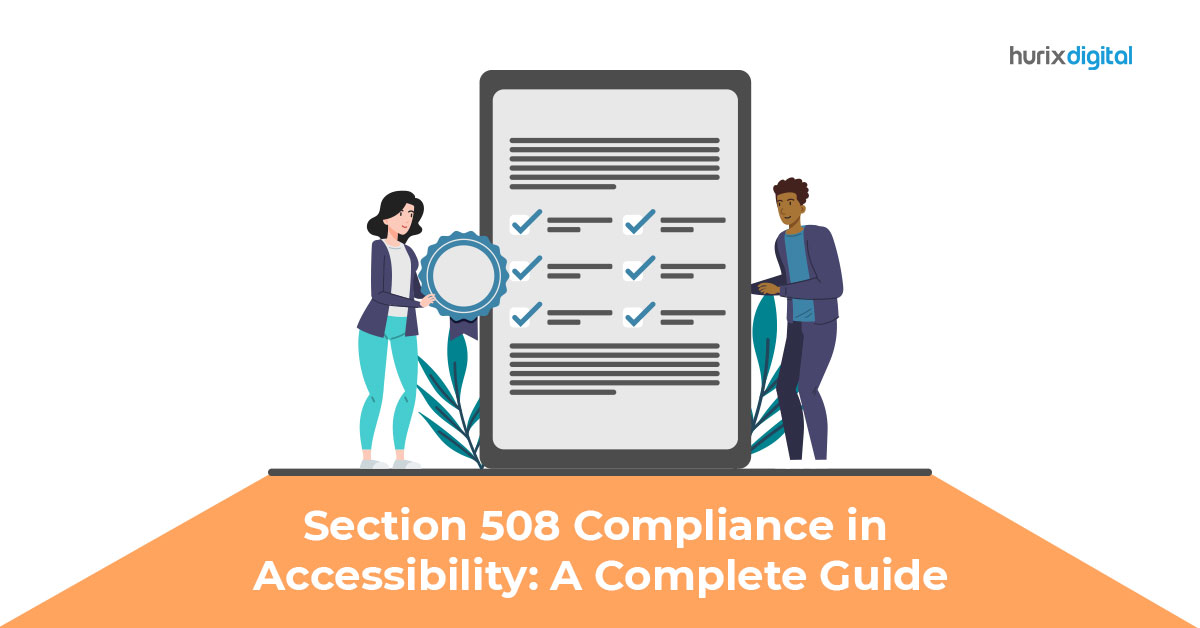How to Make Your Website 508 Compliant?
One of the most sought-after questions is, ‘What is 508 compliance?’ The answer is that 508 compliance is primarily a law requirement that requires all digital government resources to be completely safe and accessible for people with disabilities.
The law covers several different issues related to helping people with different kinds of disabilities.
This blog covers various aspects of 508 compliance and different ways to make a 508 compliance website. It defines a set of requirements and guidelines to make information conveniently accessible to individuals with disabilities.
Table of Contents:
- Section 508: An Overview
- Eight Key Features That Make Your Website Compliant With Section 508
- Conclusion
Section 508: An Overview
There are multiple laws related to Section 508. Among these, the most relevant to information and communication are:
- Americans with Disabilities Act (ADA)
- Communications and Video Accessibility Act of 2010
- Section 255 of the Communications Act
The new Section 508 update (updated in 2017) measures compliance against WCAG 2.0 AA, the same standard used worldwide. Similar to the original Section 508, WCAG 2.0 AA, the rules clearly outline what accessible websites need to do, with a more focused approach to functionality.
The 508 compliance checklist for websites is important for websites that want to make them more accessible to people with disabilities and, as a result, gain more traffic and conversions.
How to be 508 compliant? To make your website accessible, there are certain Website Content Accessibility Guidelines(WCAG 2.0). To give you a clear idea, some 508 compliance examples are mentioned below.
Also Read: Section 508 Accessibility Standards: Key Guidelines, Significance and More!
Eight Key Features That Make Your Website Compliant With Section 508
To know more about how to make a website 508 compliant, it should include the following key features:
1. Navigation and Accessibility Using the Keyboard
Users with various motor disabilities or those who use screen readers heavily depend on keyboard-only visual indicators. This makes it essential for websites to enable interactions with assistive technology.
For instance, buttons, links, or input fields should be easily controlled with the arrow, tab, or other keys to increase accessibility rather than needing a mouse click. Users should also be able to use navigation simply by jumping through page sections, headers, paragraphs, and other page elements.
Therefore, websites need to allow users to navigate the platform using a keyboard and make each site element accessible through the keyboard.
2. Alternative Text for Images
Alternative (Alt) text is a crucial part of 508 website compliance that describes what is depicted in the image. Since screen readers can easily read this text, people with visual disabilities know what the picture is about. Alternative image text gives a certain context to the images on the page that users cannot see.
508 compliance requires the Alt description to be accurate, descriptive, and helpful if links are added to the image, such that the user clicks on the image and opens a new webpage. The link destination must also be mentioned in the Alt text.
3. Transcript or Captions for Videos/Audio
Transcripts and captions are primarily used to represent the spoken content from audio and videos in the text format. Also known as closed captioning, it is simply the text included for the hearing impaired.
While a transcript is a text version of the content presented in a separate document, captions typically appear simultaneously with the spoken words in the video.
Manually creating captions is generally very time-intensive, and auto-generated captioning is usually error-prone. However, many companies today offer closed captioning transcript services for videos or podcasts.
4. Screen Reader Capability
Ensure that the site is fully accessible with screen readers, the accessibility technology most visually impaired users employ. Screen readers rely heavily on HTML elements and attributes to interpret content and convey information accurately.
- Logical Structure with HTML: Use HTML headings, lists, and paragraphs to create a logical structure, which is easy to navigate for screen readers.
- Meaningful Link Text: Use descriptive link text that clearly explains what one can expect to find at that link. Avoid generic phrases such as “click here” or “learn more.”
5. Alternative Text for Videos
Likewise, for Alt text for images, a video embedded in a webpage should include alternative descriptions to allow a screen reader to describe the video to those who are not sighted easily. Alternatives can be in the form of:
- Captions: Text overlays on the video that contain a transcription of dialogue and sound effects.
- Audio Descriptions: This involves descriptions, narration, and audio of visual elements that a person sees in the video, including events, expressions, and on-screen text.
- Transcripts: A written transcript of the video’s audio content, including dialogue, sound effects, and music.
With these formats, your video content can be accessed by larger audiences with visual, hearing, or even cognitive disabilities.
6. No Time Limits
To comply with 508, you must not set time limits on the website. This is simply because some users might require more time to perform a particular action, and completing tasks within a time limit can be challenging for them. This timeout feature is often found in forms where personal information is required.
Either give the user ample time or add a warning to delay a timeout. If a timed response is still necessary, it is important to allow users to return to the action after the session has timed out.
7. Color and Contrast
Color and contrast can present unique challenges for users with visual impairments. Adding color-coded fields, labels, or icons is an easy and convenient way to resolve color-based accessibility issues.
Therefore, websites need to be color-savvy to comply with Section 508 guidelines. For instance, in an online form, use the color green to show that everything was entered correctly and the color red to highlight an error.
8. Avoid Flickering Objects on the Screen
Certain color schemes and screen flickers can cause seizures in some people. For this reason, websites must avoid causing the screen to flicker with a frequency higher than 2 Hz and lower than 55 Hz.
With a considerable chunk of users with learning or cognitive disabilities, it can be challenging if an organization’s website is not accessible. Whether your organization is legally required to be 508 compliant or not, having a fully accessible and 508 compliant website is certainly a best practice to follow.
Also Read: Section 508 Compliance in Accessibility: A Complete Guide
Conclusion
508 compliance requirements are essential for ensuring your inclusivity for all the users of your website. By integrating the eight key features essential for 508 compliance into your website design, you not only fulfill legal obligations but also demonstrate a commitment to accessibility and user satisfaction.
Embracing 508 compliance enhances usability, expands audience reach, and reflects a dedication to inclusivity, ultimately fostering a more equitable online environment for everyone.
Hurix Digital can help you ensure that your website’s accessibility allows users worldwide to navigate seamlessly for an enhanced user experience.
Our experts can provide excellent guidance on revamping or modifying your website to maximize readership regardless of disabilities.

Vice President – Content Transformation at HurixDigital, based in Chennai. With nearly 20 years in digital content, he leads large-scale transformation and accessibility initiatives. A frequent presenter (e.g., London Book Fair 2025), Gokulnath drives AI-powered publishing solutions and inclusive content strategies for global clients








